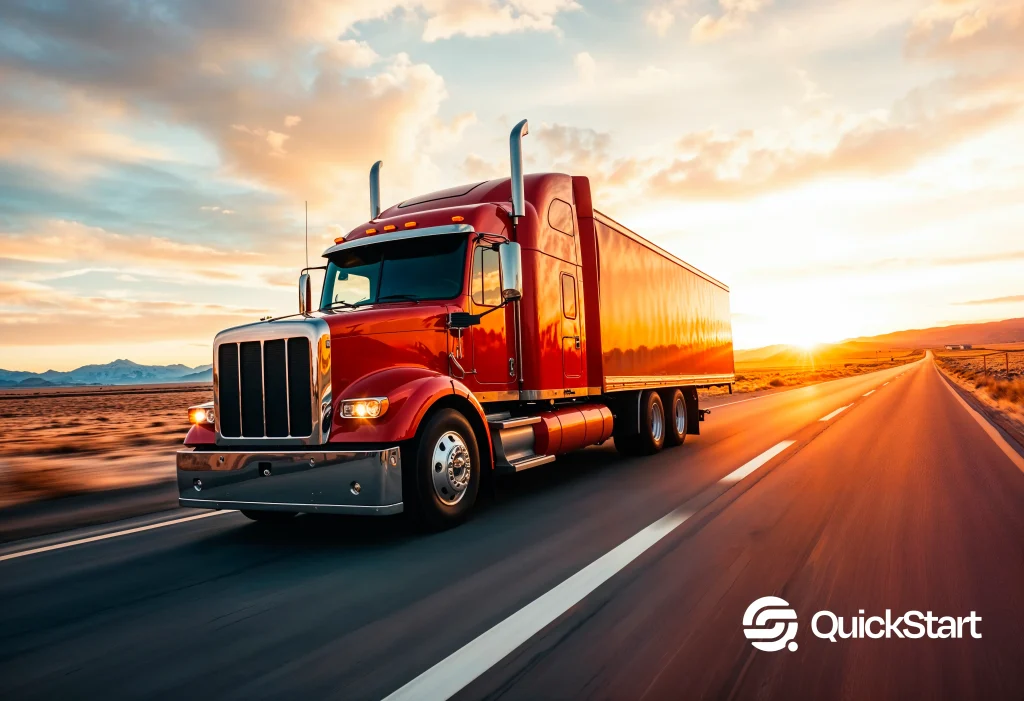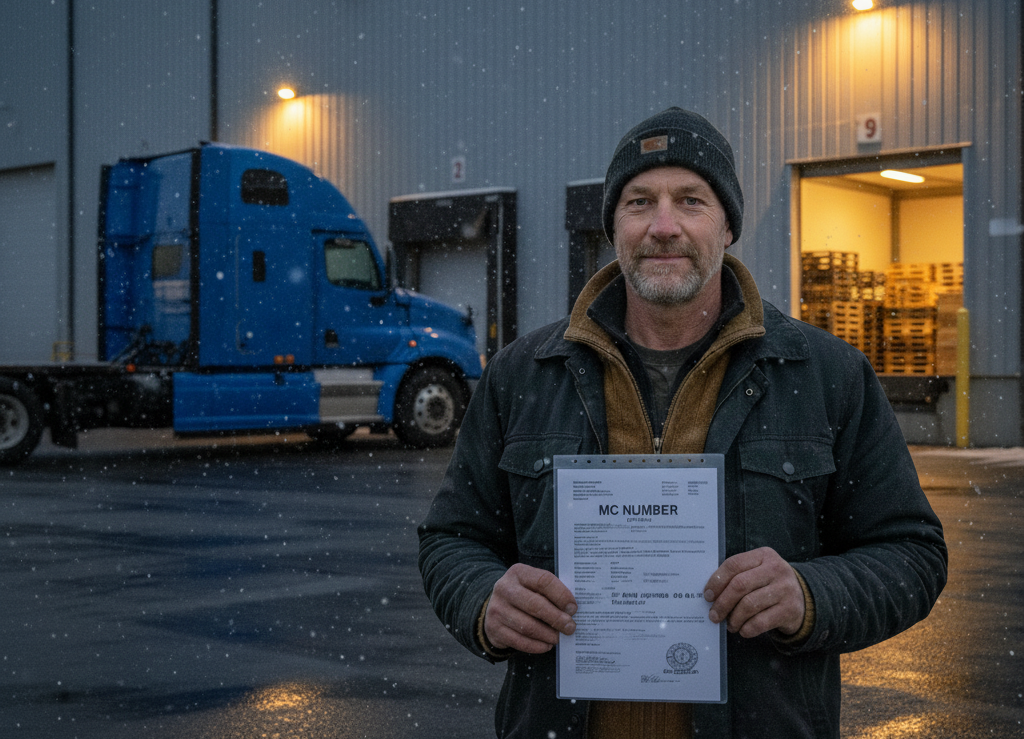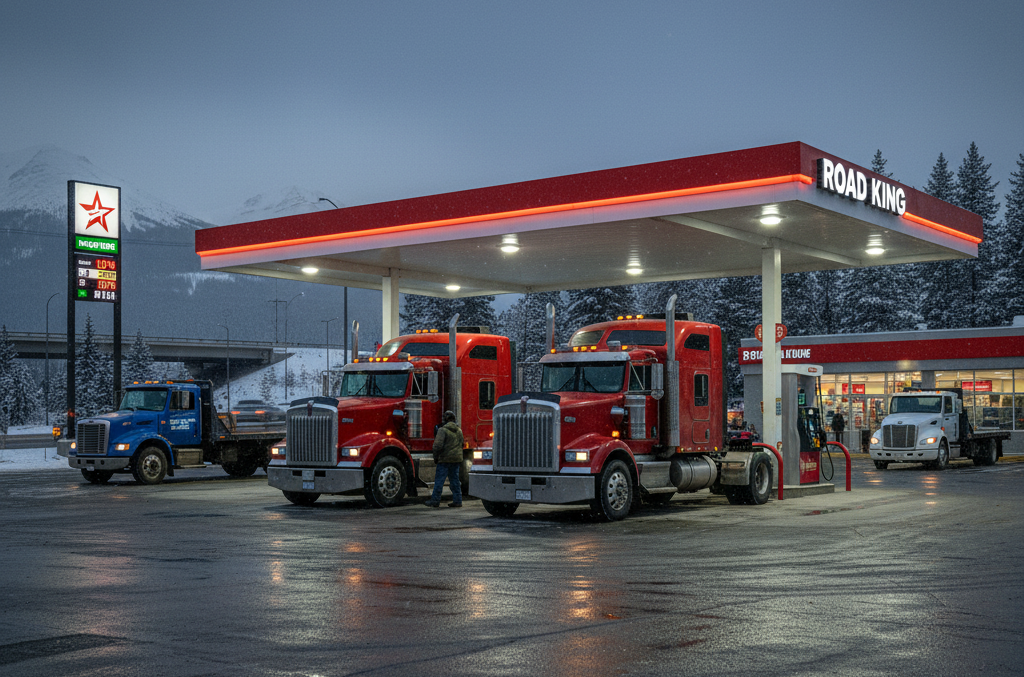What is Last-Mile Delivery?
Last mile delivery refers to the final step in the logistics process. During this stage, goods are moved from a transportation hub, such as a warehouse, distribution center, or retail store, to the customer. This is often the most important part of the delivery process, as it directly impacts the customer experience. Whether delivering to homes, businesses, or other final destinations, the last mile delivery ensures the products reach their intended destination timely and efficient.
In addition to its importance, the final leg of the supply process is also the most complex and costly part. Last mile trucking providers usually use smaller vehicles, like vans or box trucks. They can easily navigate urban environments and make several steps in one route. This focus on efficiency is required amid the growing demand for fast-delivery services.
Nowadays, delivery companies implement different strategies to refine their last mile logistics. For instance, they can optimize routes, use real-time tracking solutions, and offer same-day delivery. The main goal is to reduce the high costs and maintain delivery service quality.
The Last Mile Problem: Challenges in Delivery
The last mile delivery involves significant challenges. Failing to combat them can lead to higher expenses and reduce the efficiency. They arise from the need to deliver goods to final consumers and individual locations instead of centralized points. Unlike long-haul transportation, which benefits from bulk shipments and streamlined routes, last mile trucking involves making several stops, delivering small volumes, and navigating congested urban environment.
The challenges of last mile delivery also include higher consumer expectations, as modern consumers expect fast and convenient deliveries. Customers often require same-day delivery, putting additional pressure on businesses. This also involves facing dynamic and unpredictable demand. Seasonal spikes or promotional sales can lead to fluctuations in demand for deliveries.
In addition, last mile delivery may require several delivery attempts if customers aren’t available. This increases operational expenses, fuel usage, and delivery time.
Key Steps in the Last-Mile Delivery Process

The last mile delivery processes refer to several critical steps that ensure goods are efficiently transported from a local hub to their final delivery destination. Each step requires careful planning to optimize speed, accuracy, and cost-effectiveness.
Order processing and dispatching. The last mile logistics process starts with order processing. As an order is placed, the needed items are prepared at a warehouse, distribution center, or local hub. This requires accurate sorting and packaging. The package is then assigned to a delivery vehicle.
Route optimization. Before taking to the road, third-party logistics companies use advanced route optimization tools to determine the most efficient option. For instance, a delivery business analyzes traffic conditions, customer locations, and delivery window to reduce fuel consumption and time on the road and ensure that packages are transported on time.
Real-time tracking and visibility. Once the delivery truck starts its route, real-time tracking systems can provide customers and businesses to monitor the supply process. This transparency is vital in last mile delivery, as it allows customers to plan for their package’s arrival and provides businesses with data for better route management.
Package drop-off. The driver ensures a smooth drop-off when the package is delivered to the customer’s location. This can include several options, such as delivery to the customer’s door, to a front desk in a business, or leaving the package at a designated delivery spot. Businesses often send automated notifications or proof of delivery updates to confirm successful deliveries.
Handling filed deliveries. In cases when the customer isn’t available to receive the package, the last mile deliveries must accommodate failed delivery attempts. Usually, this involves rescheduling the delivery, redirecting it to a nearby location, or leaving the package in a pre-determined location.
Challenges with Last-Mile Delivery in Different Environments
Managing the last mile of delivery can be challenging due to varying conditions and logistical challenges. Whether deliveries are made in urban or rural environments or involve oversized goods, the conditions can influence the difficulty, cost, and time. By addressing these challenges, delivery companies can improve the efficiency and reliability of their final leg of delivery operations.
Urban vs. Rural Deliveries
In densely populated cities, last mile delivery often faces significant challenges due to high traffic congestion, limited parking availability, and complex delivery routes. Navigating through narrow and busy streets while making multiple stops in a limited time frame increases the risk of delays. Urban environments also can involve more failed deliveries especially in areas or buildings where access may be restricted.
For instance, the main challenges of the last stage of the delivery process in urban areas include:
- Traffic congestion. Urban streets are often jammed, slowing down delivery times and increasing fuel consumption.
- Parking difficulties. Finding legal and convenient parking spots for delivery vehicles can be challenging in city centers, adding extra time.
- Increased delivery density. City areas usually have more stops in close proximity. Managing these dense routes efficiently requires careful planning to avoid delays.
- Rural areas also face different challenges for deliveries. For instance, long distances between delivery points increase fuel and labor costs. In addition, there may be fewer roads or poorly maintained ones, leading to logistical difficulties. Packages may require more time to reach their destination amid the sparse population.
- Distance between stops. With delivery points spread out, deliveries in rural environment often take more time and requiree more fuel.
- Infrastructure issues. In some remote areas, poor road conditions or lack of infrastructure can slow down delivery vehicles.
- Lower delivery density. Fewer stops in rural regions make capitalizing on economies of scale difficult.
Handling Large and Heavy Items
Large or heavy items pose additional challenges in the last mile deliveries. These items require specialized vehicles, equipment for loading and unloading, and additional labor to ensure safe drop-offs. Oversized or overweight deliveries also need reliable securement to avoid shifting and proper weight distribution.
Special handling requirements. Larger items often need special equipment like lifts, adding complexity to the delivery process.
Space constraints. Finding enough space to safely unload and deliver large items in urban environments can be difficult.
Delivery coordination. Transporting bulky items requires coordination with the customer to ensure the client is present to receive the delivery.
Installation services. Some deliveries may include setup or installation, extending the time required for each stop.
Driver Shortages
One of the most pressing issues affecting last mile delivery is the growing driver shortage. The demand for quick and efficient supply increased. However, there are not enough drivers to neet the needs of the industry. This pressures existing drivers, leading to increased workloads, delays, and potentially higher wages.
Increased delivery times. With fewer drivers available, deliveries can take longer. This can worsen customer experience.
Higher delivery costs. Businesses may need to offer higher compensation rates to attract and retain drivers. This aspect increases the cost of last mile delivery.
Drivers burn out. With higher demand and longer hours on the road, driver fatigue and turnover can increase. This leads to further driver shortages and impacts delivery service quality.
Operational Costs of Last-Mile Delivery

The last mile delivery is often the most expensive part of the supply process. As customers demand faster, more flexible delivery options, businesses have to optimize their last mile logistics while keeping costs under control. Several factors contributed to higher operational expenses, from labor and fuel to technology and missed deliveries.
For instance, these factors include:
- Labor costs. This is the most significant contribution to the cost of last mile delivery. Delivery team, including drivers, dispatchers, warehouse staff, and support employees, is necessary to ensure that packages reach their final destination. With delivery driver shortages, wages have risen, driving up supply expenses. In addition, deliveries in urban environemnt require additional costs for parking and add wages cost amid longer and more complex routes.
- Fuel and vehicle maintenance. The fuel costs associated with last mile delivery are also a major factor. This can be even more significant when deliveries involve frequent stops and low-mileage efficiency in urban settings or long distances in rural areas. Rising fuel prices increase last mile delivery expenses. In addition, trucks and other delivery trucks and vans require regular maintenance, repairs, and insurance. This is necessary to keep delivery fleets in operation, adding ongoing expenses.
- Technology investments. Advanced technologies can optimize the final leg of the shipping process, but they can also require significant investments. From route optimization software and real-time tracking systems to digital communication platforms, businesses must invest in technology to improve efficiency and meet customer expectations. These tools help manage last mile delivery routes, track drivers, and provide customers with up-to-date information on the delivery status.
- Failed deliveries and returns. Failed delivery attempts and returns can be costly and time-consuming. If a client is unavailable to receive a package, it leads to rescheduling the delivery or making additional attempts. Both cases increase labor and fuel costs. Returns also create a financial burden, requiring additional transportation, handling, and sometimes restocking fees.
Strategies to Reduce Last-Mile Delivery Costs
Business often try to reduce the costs associated with last mile delivery, while maintaining the efficiency. Still, they can invest in technology, optimization, and alternative delivery models to manage these expenses and improve customer satisfaction.
Route optimization. The use of advanced route planning software helps reduce fuel consumption and driver hours by identifying the most efficient route options.
Micro-fulfillment centers. Companies can launch small fulfillment hubs closer to customers. This can reduce delivery distances and lower fuel and labor costs.
Flexible delivery options. Offering customers options like delivery lockers, pick-up points, or the ability to choose specific delivery windows can reduce failed deliveries and related expenses.
Technology Solutions for Optimizing Last-Mile Delivery
The evolving demands of last mile delivery services lead to significant technological advancements that aim to optimize efficiency and reduce delivery costs. Businesses try to meet customer expectations for faster delivery. Thus, they often use technological solutions to tackle the complexities of last mile delivery process. These solutions transform how goods move from distribution centers to their final destination.
Route Optimization Software
One of the most critical technologies for optimizing the final stage of the supply chain is route optimization software. It analyzes various factors, such as traffic patterns, weather conditions, road closures, and delivery time windows, to identify the most efficient route. This can minimize delivery time, reduce fuel consumption, and maximize the number of deliveries per route.
Route optimization tools can also make real-time adjustments based on changing traffic conditions or unexpected events. This ensures drivers are on the most efficient path, saving time and reducing total shipping costs.
These solutions are especially useful in city areas with increased delivery density. The software helps delivery delivery personnel navigate densely populated regions, clustering stops in proximity and reducing travel time.
Efficient routes can reduce delivery time, which leads to reduced expenses due to lower fuel consumption and fewer hours spent on the road. This also improves delivery speed and client satisfaction.
Autonomous Vehicles, Drones, and Robots
The future of last-mile delivery is looking toward automation, as it is a reliable way to reduce labor costs, enhance efficiency, and meet growing delivery demand. Autonomous vehicles, drones, and delivery robots represent cutting-edge solutions for optimizing final delivery. As these technologies continue to evolve, they can have an increasingly significant role in shaping the future of last-mile delivery services.
Autonomous delivery trucks and vans are becoming more common in the delivery process. They are designed to navigate roads without human intervention, making deliveries more efficient and reducing reliance on drivers. While still in the pilot stages, autonomous trucks have the potential to control costs and enhance delivery capacity.
Drones are often used for lightweight package deliveries, especially in areas with challenging terrain or heavy traffic congestion. They can bypass ground-level obstacles, delivering packages directly to consumers quickly and efficiently. The ability of drone delivery to supply items within minutes of dispatch has the potential for time-sensitive deliveries.
Small, autonomous delivery robots are designed to navigate sidewalks and pedestrian zones. Thus, they’re already used in some urban areas. These robots are ideal for short-range deliveries, often traveling from local hubs to customer residences. They offer a convenient, low-cost solution for urban deliveries.
Telematics and GPS
These technologies play a crucial role in providing real-time visibility into last mile delivery services. They allow businesses to track the location of delivery trucks, monitor driver behavior, and provide customer with accurate updates on their shipments’ status. This is crucial for improving efficiency, maintaining driver safety, and improving a customer satisfaction.
GPS-enabled telematics allows businesses to track delivery vehicles in real time. This allows for quick responses to unexpected delays and driver rerouting if necessary.
Telematics systems also monitor driver performance, including speed, braking, and idling time. This helps companies identify areas for improvement, ensure compliance with safety standards, and reduce fuel consumption through better driving habits.
By integrating telematics and GPS data into customer-facing platforms, businesses can provide information directly to customers. This enhances the client experience, ensuring rapid order fulfillment.
The Role of Last-Mile in eCommerce
In the context of the rapidly growing eCommerce sales, last mile shipping logistics is one of the most critical components of the supply chain. With the rise of online shopping, customers expect fast delivery and flexible and reliable shipping options, putting increasing pressure on businesses to streamline the last mile of delivery.
The importance of the final leg of delivery can’t be overstated. This process allows retail companies to reduce the gap between fulfillment centers and their customers, ensuring on time delivery. This forces companies to invest in technology and innovative solutions to optimize their last mile logistics processes, reducing delivery times and improving efficiency.
Efficient last mile trucking goes beyond simply getting products to customers. It impacts customer satisfaction, brand loyalty, and overall business performance. For the eCommerce sector, a well-executed last mile delivery strategy can enhance customer experiences, minimize delivery errors, and reduce expenses.
As e-commerce continues to expand, optimizing last-mile logistics is essential for businesses aiming to stay competitive. Retailers who prioritize and refine their last-mile trucking operations can meet consumer expectations and gain a significant edge in the marketplace.
Conclusion
Last mile delivery involves numerous challenges, from navigating congested city areas to minimize failed deliveries. At the same time, the final leg of delivery presents opportunities to enhance overall operations. Companies that choose to invest in innovative solutions like real-time tracking, route optimization, and autonomous delivery trucks are prepared to meet the demands of modern consumers.
Efficient last mile trucking reduces operational expenses and ensures a smoother delivery experience for customers. By prioritizing and refining their final mile delivery services, companies can ensure they remain competitive in the market.




